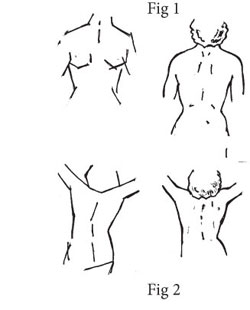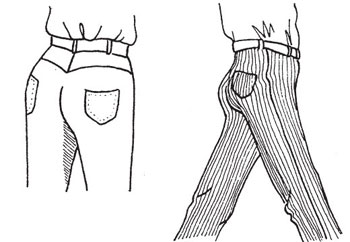
The female figure
 Almost all artists have an eye for a beautiful body. But not many
beginners have the opportunity, or perhaps the confidence, to attend a
life drawing class to learn the skills. Almost all artists have an eye for a beautiful body. But not many
beginners have the opportunity, or perhaps the confidence, to attend a
life drawing class to learn the skills.
 There are many ways of learning how to sketch the human figure. The
female form is the one most used, published, drawn or painted. The male
frame, in comparison is rather plain and not nearly as curvaceous. Stone
age artists depicted their women folk as having huge backs. There are many ways of learning how to sketch the human figure. The
female form is the one most used, published, drawn or painted. The male
frame, in comparison is rather plain and not nearly as curvaceous. Stone
age artists depicted their women folk as having huge backs.
We believe that this was the way they actually were. Modern woman has
evolved to own narrower hips, a deeper, flatter tummy and generally
quite pronounced rounded breasts.
There's more to drawing the female figure than there is to drawing
that of a man. The female structure and back, for example, often seem
heavier, in size, than their male counterparts, due to the layer of
fatty tissue women carry.
Figure 1 gives the basic structure of a front pose and the back.
The human spine is curved. The neck line moves from the upper trunk
at a distant angle. Notice too, the mass of muscle in back and hips, and
how the belly curves gently out.
These are all important points to remember when you are drawing
people.
Figure 2 shows a girl's back with her hips tilted, and this makes the
back shape slightly different from the previous example. The basic
construction lines show the subtle changes.
This is why an accurate outline sketch is so vital. The female belly
is more rounded than a man's. A structure can be short fat, or thin; a
waist may be high, low or average. You can use yourself as a model with
the aid of a full-length or large mirror.
Figure 3 (clothed figures) shows how material can be drawn to give
the viewer an idea of the form beneath it.
Creases and folds usually help to do this. Lots of practice is needed
before moving on to draw a complete figure.
 |

